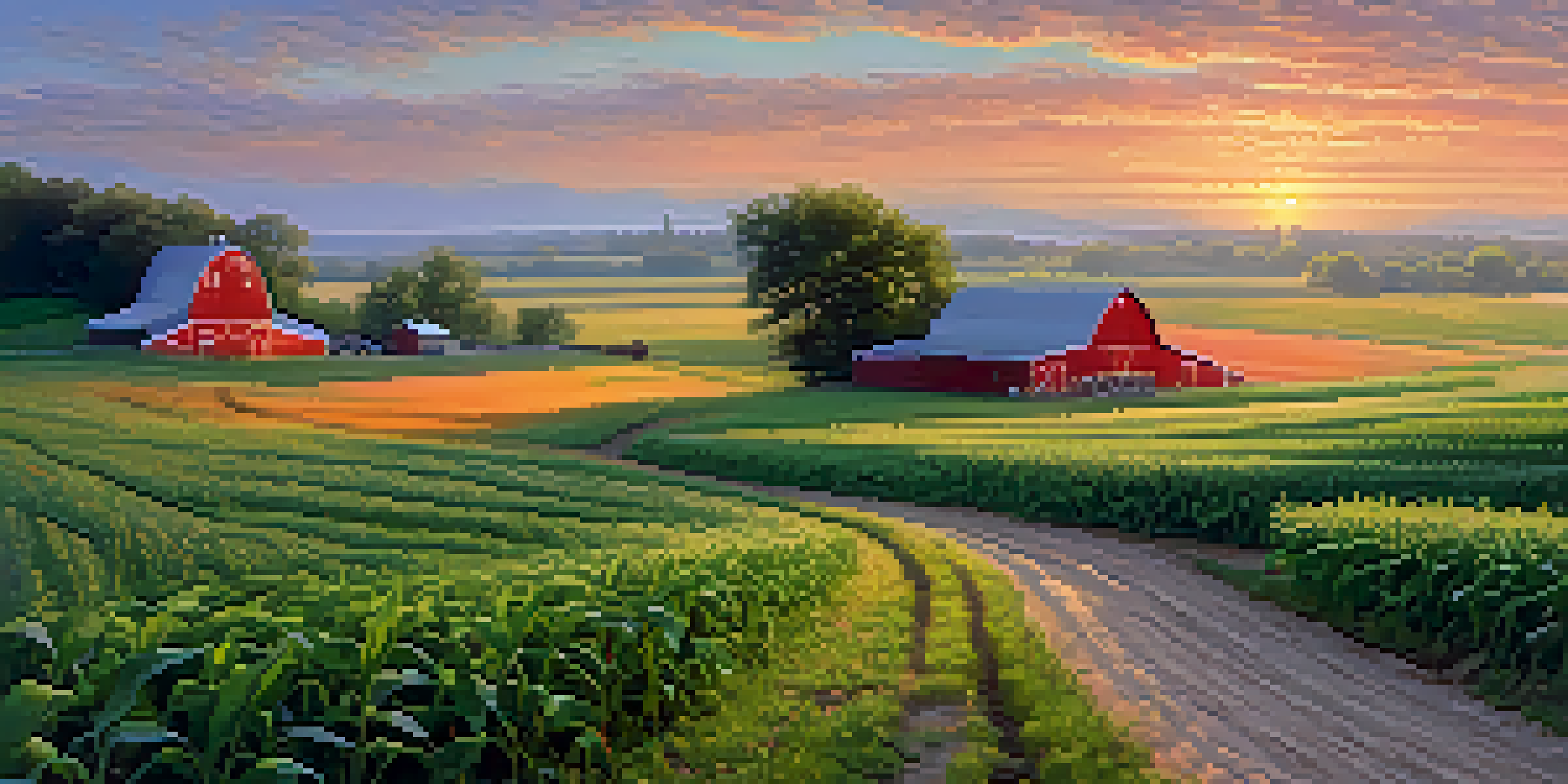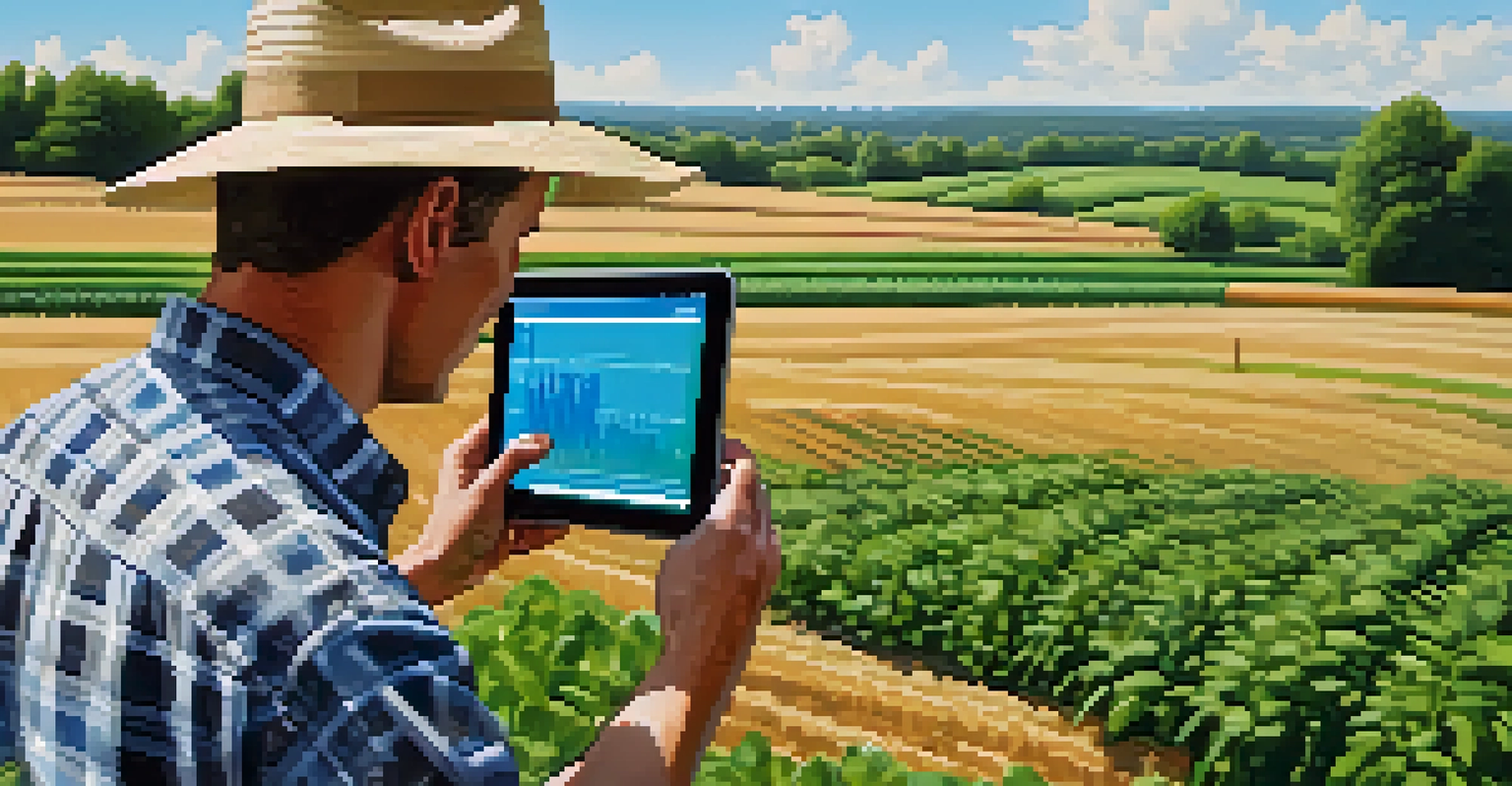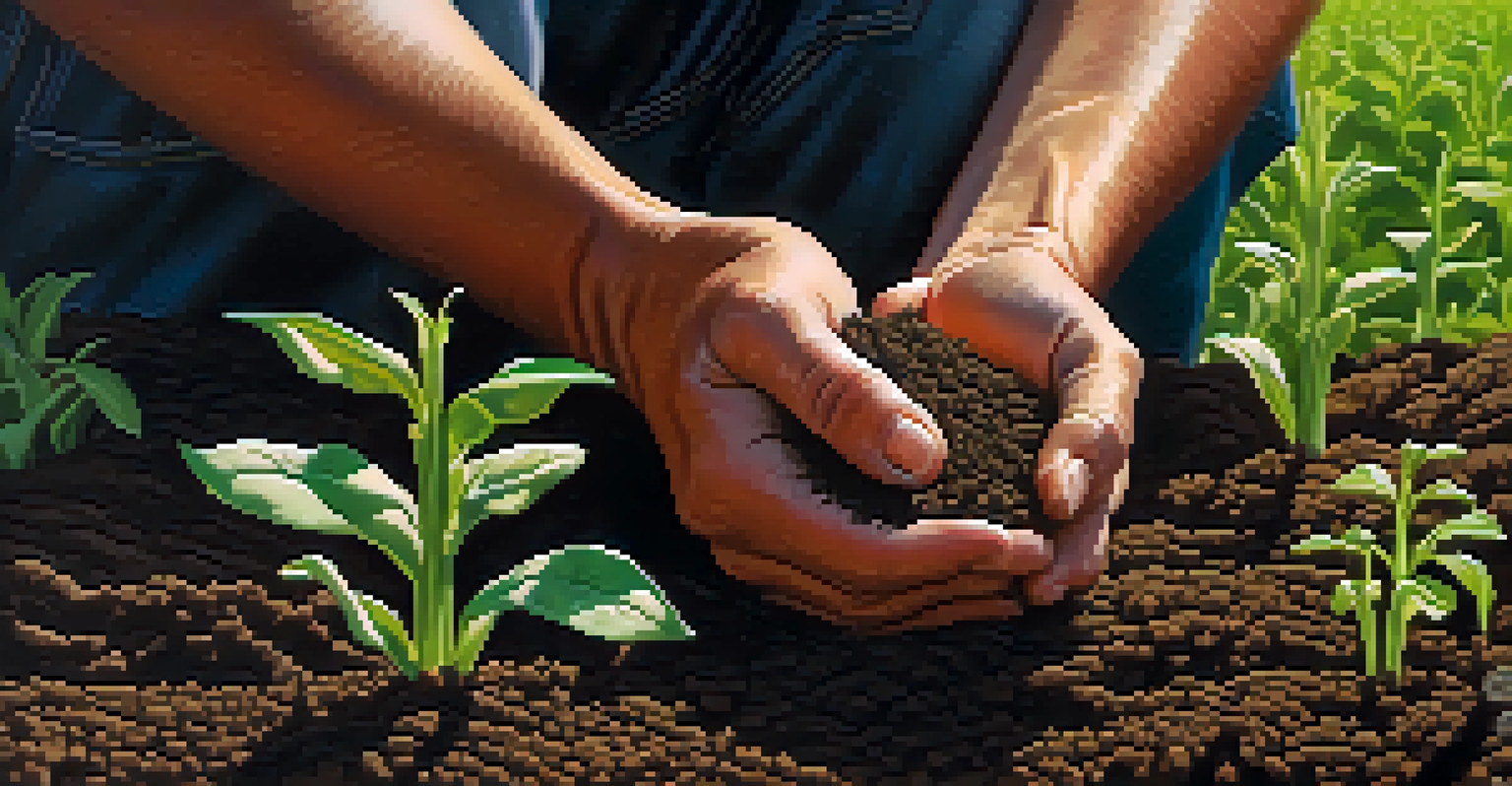Challenges Facing Illinois Farmers: From Regulations to Markets

Understanding Regulations: A Complex Landscape
Illinois farmers are often overwhelmed by a maze of regulations that govern their operations. From environmental guidelines to labor laws, these rules can be complex and vary significantly across regions. Navigating this regulatory landscape requires not only patience but also a keen understanding of the legal framework surrounding agriculture.
The farmer has to be an optimist or he wouldn’t still be a farmer.
For instance, the Illinois Environmental Protection Agency has stringent regulations regarding water usage and runoff management. Farmers must stay informed about these regulations to avoid hefty fines or legal issues. This constant need for compliance can divert time and resources away from actual farming activities.
Moreover, as regulations evolve, farmers must adapt quickly. This means investing in training and new technologies to meet compliance demands, which can strain budgets and resources. Ultimately, the burden of regulation can stifle innovation and growth in the agricultural sector.
Market Access: The Struggle to Connect
Finding a market for products is another significant challenge for Illinois farmers. Despite being part of a rich agricultural community, many farmers struggle to access markets that pay fair prices for their goods. This disconnect can be especially pronounced for smaller farms that lack the resources to reach larger distributors.

Additionally, fluctuating commodity prices can make it difficult for farmers to predict their income. For instance, a sudden drop in soybean prices can severely impact profitability, forcing farmers to make tough decisions about planting and harvesting. This uncertainty can discourage investment in crop improvement or diversification.
Navigating Complex Regulations
Illinois farmers face a challenging regulatory landscape that diverts time and resources from actual farming.
Farmers are also competing against large agribusinesses that have established relationships and better access to markets. As a result, smaller farmers may find themselves at a disadvantage, leading to a cycle where they struggle to thrive. Building strong local networks and exploring alternatives like direct-to-consumer sales can help mitigate these challenges.
Climate Change: An Ongoing Threat
Climate change presents a looming threat to Illinois farmers, impacting weather patterns and crop yields. Farmers are witnessing increased instances of extreme weather, from droughts to heavy rainfall, which can disrupt planting and harvesting schedules. This unpredictability makes it challenging to plan for the future.
In the face of climate change, farmers must adapt, innovate, and build resilience to ensure the sustainability of their operations.
For example, a late frost can devastate early crops, while excessive rain can lead to flooding in fields. These conditions not only affect yields but also create additional costs for farmers, who must invest in recovery efforts or alternative crop management strategies. Adapting to these changes requires both knowledge and financial resources, which can be a significant hurdle.
Moreover, many farmers are seeking sustainable practices to mitigate their environmental impact. However, transitioning to more resilient farming methods often requires upfront investment and time, which can be hard to come by. Balancing immediate needs with long-term sustainability goals is an ongoing challenge.
Labor Shortages: Finding the Right Help
Labor shortages are a pressing issue for Illinois farmers, particularly during peak seasons when the demand for labor surges. Many farmers rely on seasonal workers for planting and harvesting, but finding reliable help has become increasingly difficult. This shortage can lead to unharvested crops and financial losses.
The COVID-19 pandemic exacerbated this problem, as many migrant workers faced travel restrictions or health concerns. As a result, farmers had to adapt quickly, often resorting to hiring local workers who may lack the necessary experience or skills for agricultural tasks. This mismatch can affect productivity and crop quality.
Market Access Challenges Persist
Many Illinois farmers struggle to access profitable markets, particularly smaller operations competing against larger agribusinesses.
To combat labor shortages, some farmers are turning to technology, such as automation and robotics. While these solutions can help alleviate some pressures, they often come with high upfront costs and require technical knowledge. Balancing the need for labor with the adoption of new technologies is a complex challenge for many agricultural operations.
Access to Technology: Bridging the Digital Divide
Technology has the potential to transform farming practices, but access remains uneven among Illinois farmers. While larger farms may easily invest in cutting-edge technologies like precision agriculture, smaller farms often struggle to keep up. This digital divide can hinder their competitiveness and growth.
For example, precision farming techniques can optimize yields and reduce waste, but the costs of the necessary equipment and software can be prohibitive for smaller operations. Without access to these tools, farmers may miss out on opportunities to improve efficiency and sustainability, putting them at a disadvantage.
Efforts are underway to provide training and resources to bridge this gap. Local cooperatives and agricultural extension services are working to educate farmers about available technologies and how to implement them. However, the pace of technological advancement means that ongoing support is essential to ensure all farmers can benefit.
Financial Pressures: The Weight of Debt
Financial pressures are a constant reality for many Illinois farmers, particularly in an industry known for its volatility. Rising costs of inputs, such as seeds and fertilizers, combined with fluctuating market prices, can create a precarious financial situation. Many farmers find themselves relying on loans to keep operations afloat, leading to significant debt.
This debt can be a double-edged sword; while it allows farmers to invest in necessary resources, it also creates stress and uncertainty. A poor harvest or market downturn can quickly lead to overwhelming financial burdens, limiting farmers' ability to invest in their operations or plan for the future.
Sustainability Balances Profit Needs
While striving for sustainability, Illinois farmers must balance environmental responsibility with the pressures of profitability.
To mitigate these pressures, some farmers are turning to financial education programs and resources. Understanding budgeting, risk management, and diversification can help farmers make informed decisions and build more resilient operations. However, the path to financial stability is often fraught with challenges.
Sustainability: Balancing Profit and Responsibility
Sustainability has become a buzzword in agriculture, but for many Illinois farmers, it represents a complex challenge. Balancing the need for profitability with environmental stewardship requires careful planning and commitment. While consumers increasingly demand sustainable practices, the path to achieving them can be daunting.
Adopting sustainable farming practices often requires upfront investments in technology and training. For example, shifting to organic farming or regenerative practices may involve transitioning away from traditional methods, which can be a significant risk for farmers already facing financial pressures. This balancing act can lead to hesitation in making necessary changes.

However, many farmers are recognizing the long-term benefits of sustainable practices, both for the environment and their bottom line. By engaging in local markets and building consumer trust, they can not only improve their practices but also enhance their profitability. The journey toward sustainability is not easy, but it is increasingly seen as essential for the future of farming.